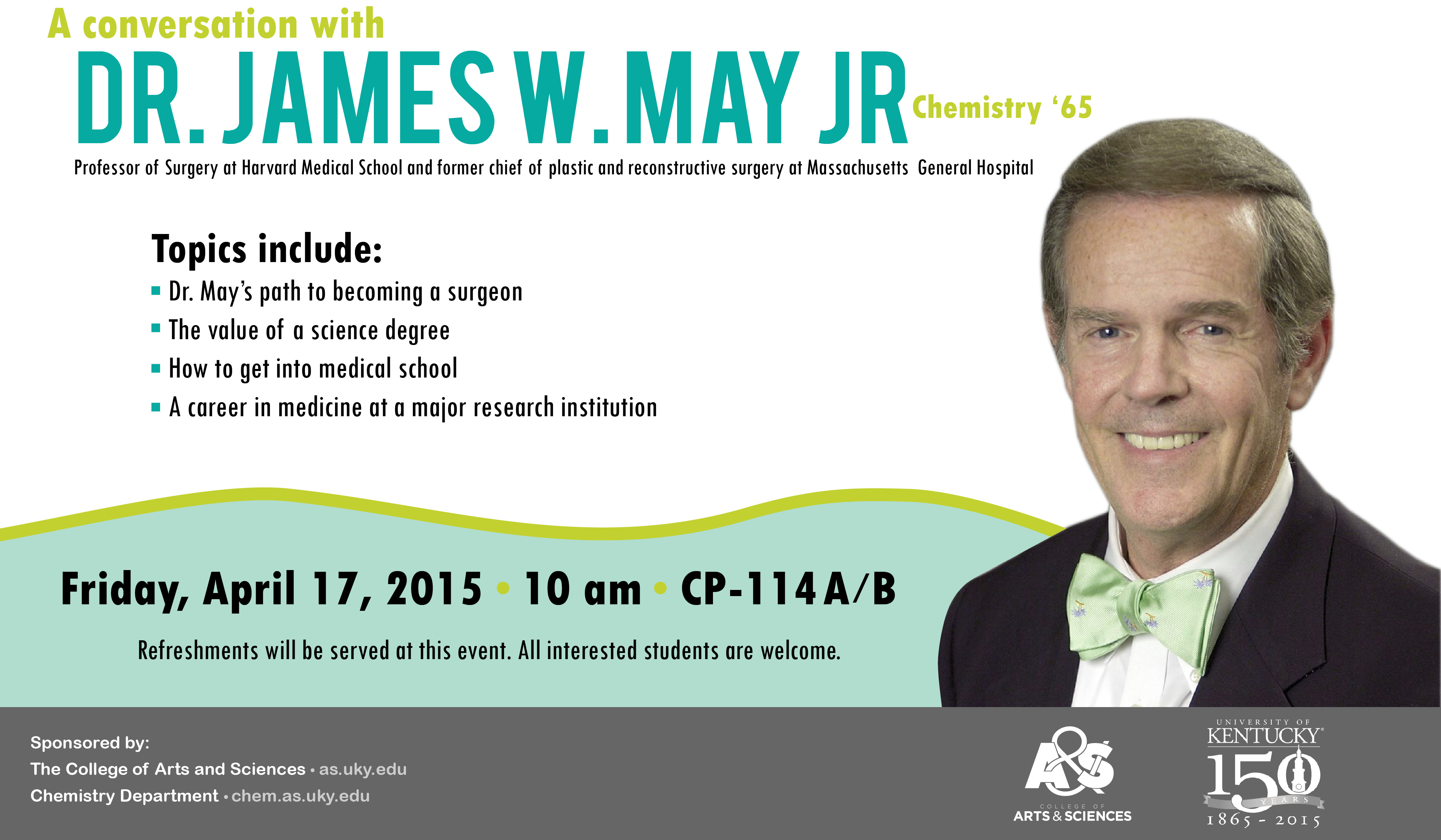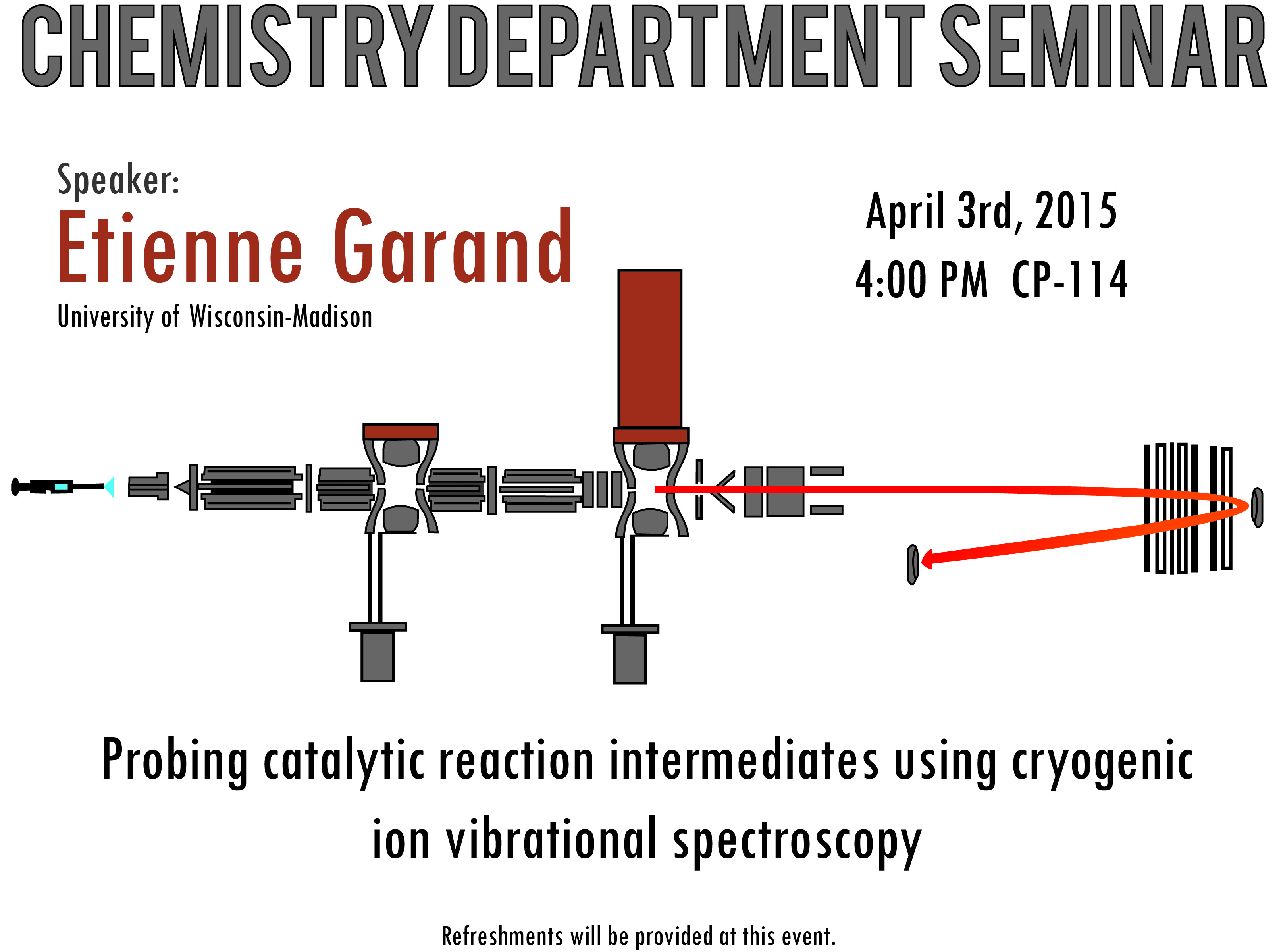A Conversation with Dr. James May Jr.
----------
Dr. James W. May Jr (Chemistry '65) will be available to talk with students about several topics, including: his path to becoming a surgeon, the value of a science degree, how to get into medical school, and a career in medicine at a major research institution.
All interested students are welcome. Refreshments will be served at this event.
Co-sponsored by the College of Arts & Sciences and the Department of Chemistry






